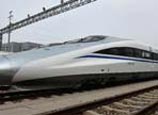
Edited and translated by Gao Yinan,Huang Jin People's Daily Online
China's current ‘money shortage’ will not lead to financial and economic crisis, but only some minor discomfort in terms of economic transition and structural adjustment. It will not affect China's long-term economic development.
The current money shortage is only temporary. The authorities aim to strengthen supervision over financial products and cross-border trades. The Banks will be required to turn over deposit reserves and fiscal deposits at the end of June. Their annual assessments will also play a role in any future decisions on liquidity.
The current money shortage is expected to ease or even dissipate after June 30. Latest data show that the Shanghai Interbank Offered Rate declined from a staggering 13.44 percent on June 20 to 6.4890 on June 24, and to 5.7360 on June 25 - a clear indication that liquidity is returning to the market. The current money shortage is the result of localized structural problems and can be resolved through broader adjustments in the banking system.
Both banking capital and private capital are currently plentiful. At the end of May RMB deposits were approaching one hundred trillion Yuan, and RMB loans amounted to 67.2 trillion yuan, up 14.5 percent compared to the previous month’s figures, while from January to April the value of foreign currency holdings in financial institutions grew to 1.5 trillion Yuan, with an average monthly increase of about 377.4 billion yuan. Last year the total increase in foreign currency holdings in financial institutions was 494.6 billion yuan. This indicates that liquidity in the entire banking system remains at a high level, and the so-called money shortage is the result of tension in structural funds.
In common parlance, structural “money shortage” means money is in the wrong place in the economy. Since June, national bank credit has increased by nearly 1 trillion. Seventy percent of this increase comes from bill financing, while general loans have increased very little. This shows that there has been a lack of money being invested in the real economy. In contrast, interbank business has grown rapidly. The truth behind current figures is therefore that there has been a funds mismatch. This kind of mismatch results from a banking ploy of “making money from money” and creates a structural money shortage.
It is not difficult to resolve the “money shortage” problem by redirecting funds to the right places in the economy. The only costs involved are those related to the adjustment of the mismatch of bank funds. This will not endanger the safety of deposits, neither is there any risk that it will lead to bank failures.
The current “money shortage” is a local problem resulting from measures applied by the central bank in market-oriented regulation. It can be adjusted and controlled, and will not lead to any major financial or economic crisis. In the short term, the money shortage does indeed exist in banking, but only in banking, and it is minor. While the central bank’s rejection of any quantitative easing seems to be a negative response, it is in reality an active strategic choice.
Read the Chinese version: 所謂“錢荒”不會引發金融危機(望海樓)
Source:People's Daily Overseas Edition, author: Shi Jianxun
















 Mom makes target weight to donate kidney to son
Mom makes target weight to donate kidney to son


![]()
